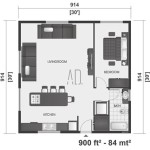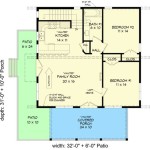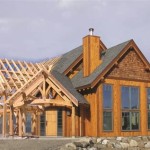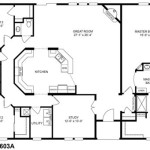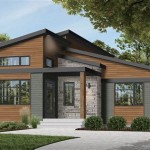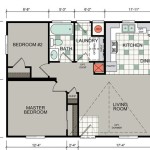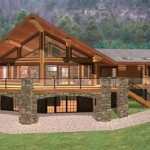One Level Home Floor Plans
One-level homes have become increasingly popular for their accessibility, convenience, and ease of maintenance. They offer a practical and comfortable living space, especially for those who prefer to avoid stairs or have mobility concerns.
When designing a one-level home, it's essential to consider the efficient use of space, as well as the flow and connectivity between different rooms. The floor plan should be well-organized, with designated areas for living, dining, sleeping, bathrooms, and storage.
Benefits of One Level Home Floor Plans
- Accessibility: No stairs or other vertical barriers make one-level homes easily accessible for people of all ages and abilities.
- Convenience: Everything on a single floor eliminates the need to move up or down stairs, making it convenient for daily living and entertaining.
- Maintenance: One-level homes require less maintenance compared to multi-level homes, as there is no need to clean or maintain stairs or hallways.
- Energy Efficiency: By reducing the number of enclosed spaces and the overall volume of the house, one-level homes can be more energy-efficient.
- Flexibility: One-level homes can be easily modified or expanded as needs change, making them suitable for different stages of life.
Design Considerations for One Level Home Floor Plans
When designing a one-level home, consider the following factors:
- Space Optimization: Utilize every square foot efficiently by incorporating built-in storage, multifunctional spaces, and open floor plans.
- Flow and Connectivity: Ensure smooth transitions between rooms and avoid creating dead-end spaces. Consider sightlines and the relationship between different areas.
- Natural Lighting: Maximize the use of windows and skylights to bring in natural light, reducing the need for artificial lighting.
- Outdoor Living: Integrate outdoor spaces, such as patios or decks, into the design to extend the living space and connect it to the surrounding environment.
- Universal Design: Incorporate features that enhance accessibility for all, such as wide doorways, ramps, and grab bars.
Types of One Level Home Floor Plans
One level home floor plans come in various configurations, including:
- Ranch Style: A classic one-level design with a long, rectangular shape and a low roofline.
- Cottage Style: A charming design characterized by a peaked roof, dormer windows, and a cozy ambiance.
- Craftsman Style: A bungalow-style home with natural materials, exposed beams, and an emphasis on craftsmanship.
- Modern Style: A sleek and contemporary design with clean lines, open spaces, and an abundance of glass.
- Prairie Style: A design inspired by the American Midwest, featuring low-pitched roofs, overhanging eaves, and natural materials.
Conclusion
One level home floor plans offer a wide range of benefits, including accessibility, convenience, and energy efficiency. By considering the principles of space optimization, flow and connectivity, and universal design, it's possible to create a beautiful and functional home that meets the needs of modern living.

Attractive One Level Home Plan 19506jf Architectural Designs House Plans

Must Have One Story Open Floor Plans Blog Eplans Com

Unique One Story House Plans Monster

Great One Level Floor Plan W24041bg Craftsman House Plans Home Designs Suggestions From A Spa New Barndominium

One Level House Plans For A Contemporary 3 Bedroom Home

Main Level Floor Plans For One Story With Separate Master House Home Design

Stylish One Story House Plans Blog Eplans Com

How To Choose The Right Floor Plan Niblock Homes

Best One Story House Plans And Ranch Style Designs

One Level Contemporary Home Plan With Single Garage 70670mk Architectural Designs House Plans

